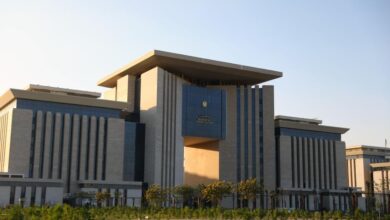
With a key Asian ally at his side, US Defense Secretary Ash Carter made a subtle jab at China on Thursday by flying aboard an American aircraft carrier plying the contested waters of the South China Sea.
He and his Malaysian counterpart, Hishammuddin Hussein, watched US Navy fighter jets roar off the steel deck of the USS Theodore Roosevelt as it sailed under a midday sun about 70 miles northwest of Borneo.
Carter said his visit and the presence of the hulking warship should not be seen as a new twist to the US naval presence is Asia. But he made no bones about the signal he was sending by visiting amid rising tensions with China.
"If it's being noted today in a special way, it's because of the tension in this part of the world, mostly arising from disputes over land features in the South China Sea," he said. "And most of the activity over the last year being perpetrated by China. There's a lot of concern about Chinese behavior out here," he told reporters traveling with him.
Last week a US Navy destroyer, the USS Lassen, challenged China's claim to a 12-mile territorial limit around Subi Reef in the Spratly Islands about 150 miles to 200 miles from where the Theodore Roosevelt was sailing Thursday.
The Lassen patrolled with about six or seven miles of the reef, according to Cmdr. Robert C. Francis Jr., skipper of the Lassen.
In an interview aboard the Roosevelt, Francis said the crew of a Chinese destroyer that shadowed the Lassen for several days contacted the ship with a standard "query" about what the Lassen was doing. Francis said his crew replied that it was operating in international waters in accord with international law.
But the Chinese pressed the matter, he said, by repeating the query over and over.
"All of our interactions were very professional," Francis said. "I never felt threatened."
In the United States, much was made of the Lassen patrol, known in the US Navy as a freedom of navigation operation. But Francis said he and his crew saw it as just another day on the seas.
"We enjoyed the extra publicity," he said.
Carter, who was in Malaysia for two days of talks with Asian defense ministers, used the visit to the USS Theodore Roosevelt to amplify the US view that China is making excessive claims that nearly all of the South China Sea as its territory.
Carter also signaled that the US will keep a strong naval presence in the region in support of nations seeking to preserve stability. He flew aboard the carrier in a V-22 Osprey from a base in the east Malaysian state of Sabah. The Pentagon is interested in making arrangements with Malaysia for more regular access to base for US aircraft carriers.
Malaysia is among several countries that claim a portion of the South China Sea and disagree with China's building of artificial islands. The US and others in the region are concerned the China is trying to establish a de facto 12-mile territorial zone around the artificial islands by building airstrips and other facilities for military forces.
It is not unusual for a US defense secretary to visit an aircraft carrier. But Carter's visit drew extra attention because of the ship's location and the tensions surrounding China's reclamation work, which Adm. Harry Harris, head of US forces in the Pacific, has likened to building a "great wall of sand" with the potential for confrontations to escalate into armed conflict.
The "TR," as the carrier is commonly called in the Navy, is the flagship of a strike group of ships that includes a cruiser, the USS Normandy, as well as three destroyers; the USS Winston S. Churchill, the USS Farragut and the USS Forrest Sherman.
The strike group had been deployed in the Middle East earlier this year and most recently conducted exercises in the Indian Ocean with Indian and Japanese naval forces. In late October the TR made port visit at Singapore. It is heading to its new homeport at San Diego.
Harris has said that while Vietnam, the Philippines, Taiwan and Malaysia have also done land reclamation in areas of the South China Sea where they have territorial claims, that work is dwarfed by the size and scale of China's buildup. He said on July 24 that in a period of 18 months the Chinese had reclaimed almost 3,000 acres.
Before flying to the carrier, Carter called on all claimants to halt reclamation. He noted that in a visit to the White House in September, Chinese President Xi Jinping said China was not intending to pursue militarization of its artificial islands.
"We all must mean what we say," Carter said.
The US contends that under international law the artificial islands built by China are high seas. That means they are not eligible for the 12-nautical-mile zone granted to maritime features such as naturally formed islands capable of sustaining human habitation or economic life.




